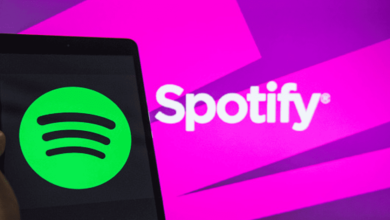Opera integrates built-in AdBlocker in Opera Mini, desktop

Oslo, Norway – May 4, 2016 – A native ad blocker is integrated into both the stable version of the Opera browser for computers, as well as the Opera Mini browser for Android – out today.
Some 60 million people use Opera for computers, while almost 120 million people use Opera Mini for Android on a monthly basis. These users no longer need to install an ad-blocking extension or download an app, to experience faster browsing.
“Opera is the first browser company to offer an native ad blocker across devices. We do this because we want to provide people with the fastest browsers in the market. Our speed test shows that online ads slow down the browsing experience. Now, with Opera, you can browse a lot faster than, for example, in Chrome,” says Lars Boilesen, CEO, Opera.
New Opera for computers is 45% faster than Google Chrome
By integrating the ad-blocker technology directly into the browser code, the new Opera for computers speeds up page loading by as much as 89% compared to browsing without ad blocking. It is also 45% faster compared to Google Chrome with third-party ad-blocking extensions installed.
New Opera Mini is 40% faster
Ad blocking is also very useful on a mobile device, where online ads take up precious screen space, slow down the browsing, and adds to the user’s data bill.
By removing online adds, the new version of Opera Mini loads webpages 40% faster than with the ad blocker disabled.
For cost-conscious mobile users, there is an added advantage to removing online ads, and that is saving money on the data bill. Opera Mini is known for its compression technology, which drastically reduces the size of data from a webpage. By also blocking ads, Opera Mini users can achieve up to an additional 14% in data savings on top of that, so that less is deducted from a user’s mobile data allowance.
How to activate the native ad-block technology
Opera Mini:
Under the “O” menu in Opera Mini, tap the data-savings summary. From there, simply toggle “block ads” on and off. On Android, the ad blocker is available in both high- and extreme-savings modes.
Opera for computers:
The integrated ad blocker can be enabled with a single click in settings. To deactivate it for a specific website, click the shield icon in the search and address bar and flip the switch. The dialog shows statistics on how many ads you’ve blocked overall, as well as on the current page. You can also compare the webpage’s load speed with and without ad blocking.
Other features in today’s release
Opera Mini:
Opera Mini for Android now gives you the ability to add websites to your device’s home screen, so favorite sites are always at your fingertips. It also brings a redesigned Discover news feed for top articles across the web.
Opera for computers:
Opera for computers is introducing a video pop out feature, which lets you shift your video frame to the side of your screen, so you can truly multitask: browse, shop online or do research without missing out on the video action.
Learn more
Download the Opera browser for computers, or take ad blocking for a spin in Opera Mini for Android.
Read more about the latest Opera Mini and Opera for computers in our blog posts.
About the speed research
The test results for computers are from the test done on 66 content-rich websites. The test machine has an AMD Phenom II X6 processor with 8 GB of RAM and was running on Windows 10 64-bit. We have done similar tests on various systems. The percentage remains very similar, while the average loading time of particular pages varies.
For the testing, we used WebDriver and repeated page-loading times for each site 15 times. The time shows median for loading a page between navigationStart and loadEventEnd events.
On Opera Mini, the speed tests were conducted by testing 50 content-rich websites. The tests were conducted on Wi-Fi on a Nexus 5X with Android 6, using our Appium-based framework. The test checked page-loading times for each site three times, in all Opera Mini data-savings modes. The time reflects the average for loading a page, measured between tapping the go button and the loading spinner stopping. The data savings compared the total number of megabytes downloaded for these sessions.
About Opera
Opera enables more than 350 million internet consumers worldwide to connect with the content and services that matter most to them. Opera also helps publishers monetize their content through advertising and advertisers reach the audiences that build value for their businesses, capitalizing on a global consumer audience reach that exceeds 1 billion.
Opera, Opera Mini, O logo and Opera Software logo are trademarks of Opera Software AS.



